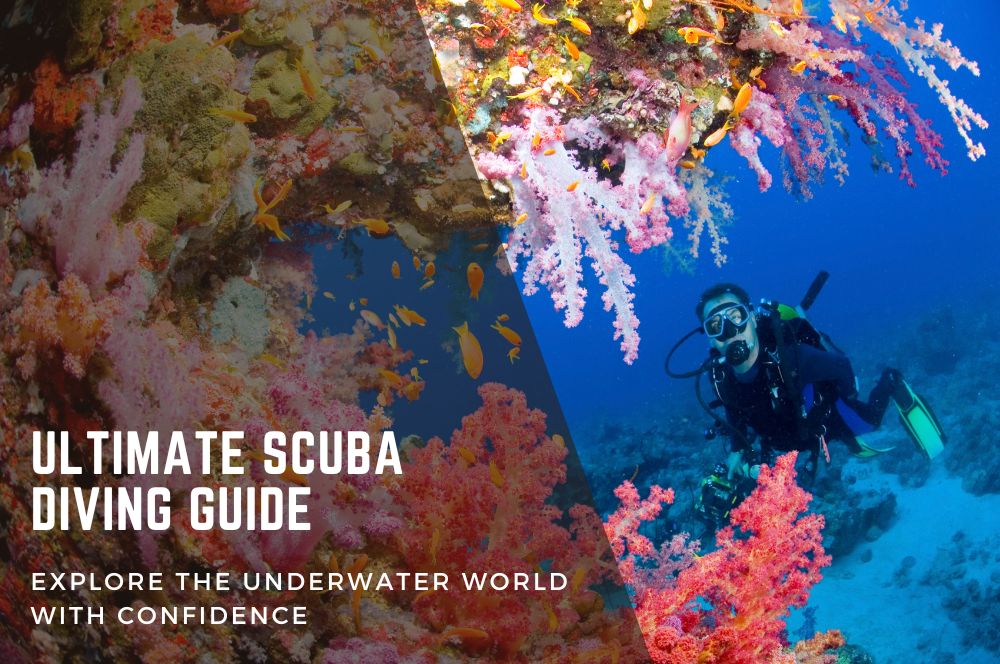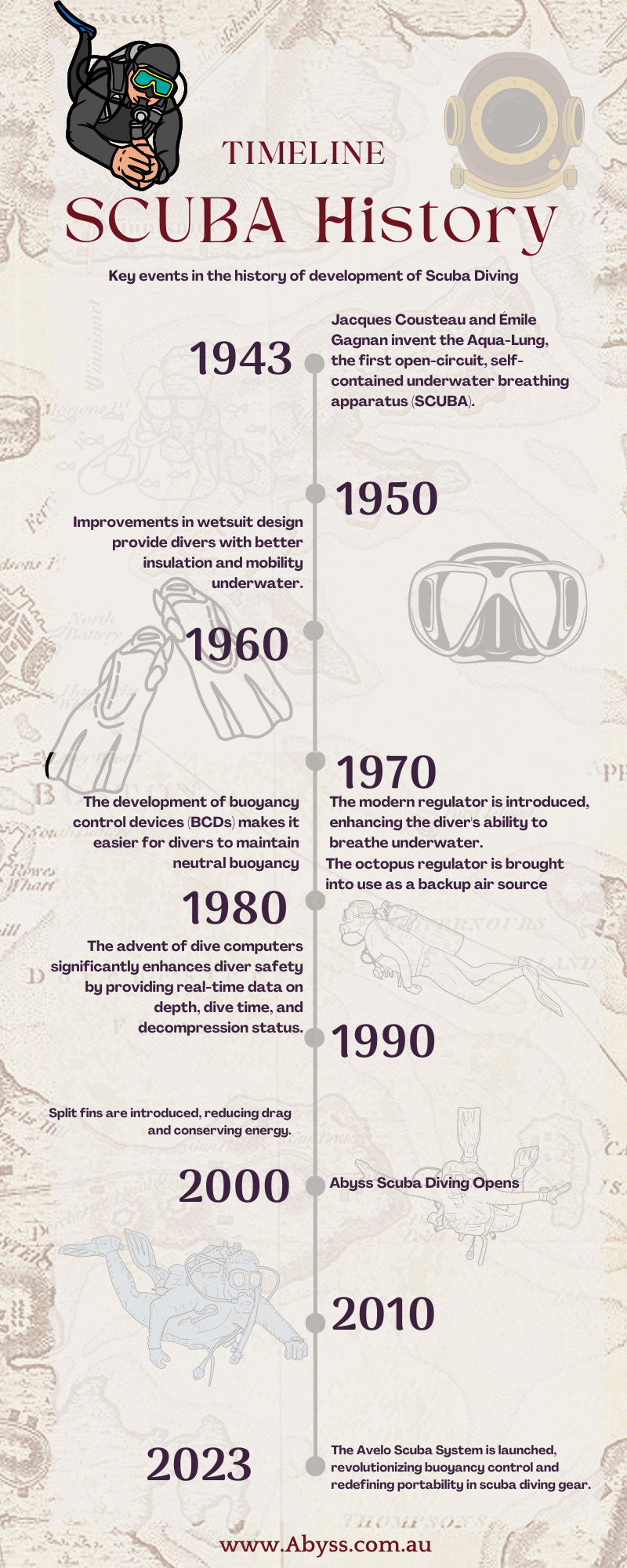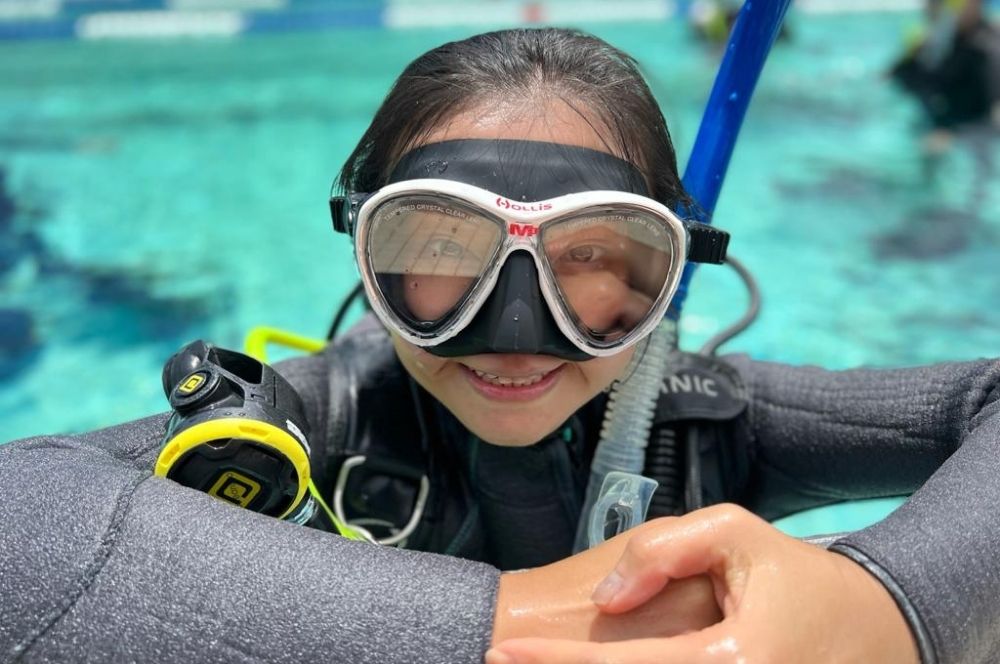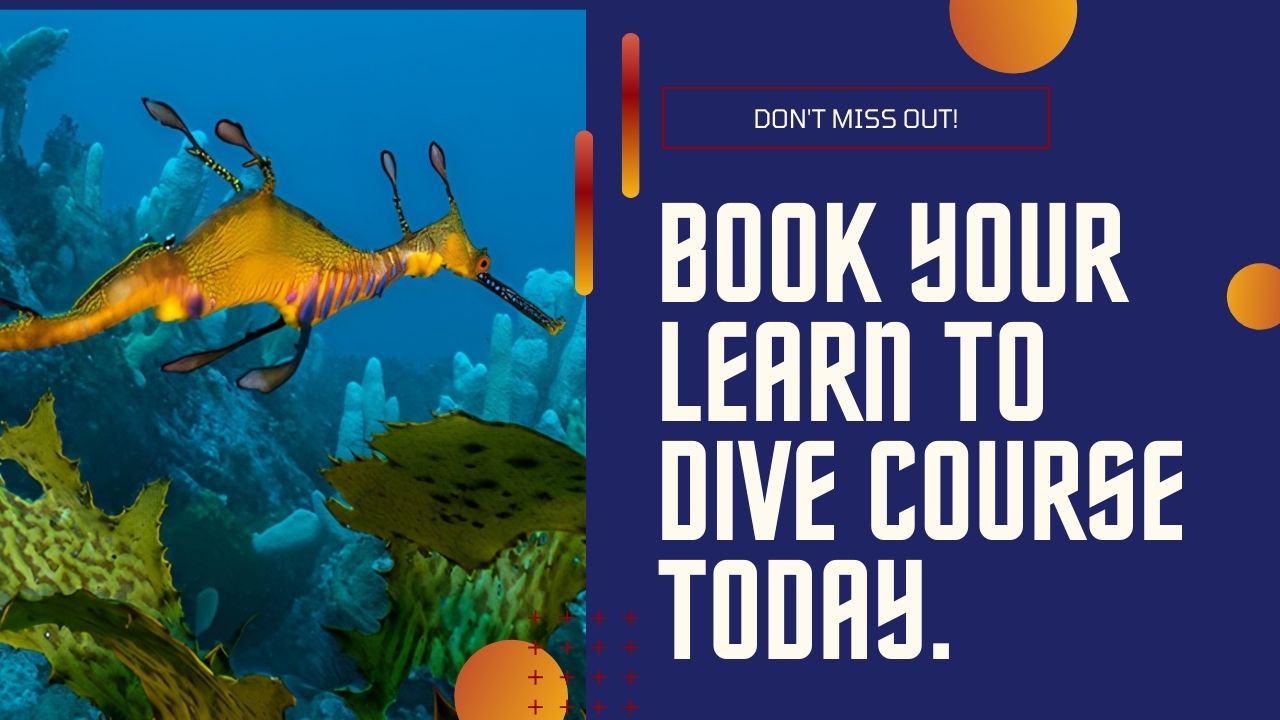You have 0 product(s) in your cart.
Abyss Scuba Diving
Ultimate Scuba Diving Guide: Master The Depths With Confidence

Ultimate Scuba Diving Guide: Explore the Underwater World with Confidence
Wondering what scuba diving is all about? Our guide provides a no-nonsense introduction to this aquatic activity, covering everything from gear selection to the first dive. Get ready to discover the exhilaration of exploring underwater worlds.
Key Takeaways
-
Scuba diving provides an intimate, exhilarating adventure, allowing direct interaction with diverse marine life and the exploration of natural and historical underwater wonders.
-
Advancements in scuba technology, from the Aqua-Lung to sophisticated dive computers, have made the sport safer and more accessible, enhancing the enjoyment of the underwater experience.
-
PADI’s educational revolution, with innovations such as the Discover Scuba Diving program and the Advanced Open Water Diver course, offers structured training for beginners and seasoned divers to deepen their skills and responsibly enjoy the marine environment.
The Allure of the Deep: Why We Dive

Imagine descending into the tranquil depths where the only sound is your own breathing, and every turn reveals a new wonder. Scuba diving offers an escape into a vibrant underwater world, an adventure akin to exploring an alien planet, teeming with life and color. From the kaleidoscopic coral reefs bustling with darting fish to the solemn stillness of ancient shipwrecks, the opportunity to scuba dive provides an intimate encounter with the sea’s enigmatic beauty.
There’s something truly magical about interacting with marine life in their natural habitat. Whether it’s a curious octopus reaching out its tentacles or a graceful manta ray gliding by, these moments forge a profound connection between humans and the ocean’s inhabitants. Scuba diving isn’t merely a sport; it’s an opportunity to witness the extraordinary, like nudibranchs and seadragons, creatures so surreal they seem conjured from a sci-fi fantasy.
For those who dare, diving with sharks can be a transformative experience. Far from the menacing predators portrayed in myths and media, sharks are complex and often misunderstood creatures. Observing them up close can shift perceptions and foster a newfound respect for these magnificent animals.
Each dive offers a private experience, a chance to explore the unknown and return with stories of the deep. It’s a unique blend of tranquility and exhilaration, where the challenges of mastering dive skills are rewarded with encounters that few on Earth have shared. Every dive site, whether a bustling reef or a serene blue hole, offers a new chapter in a diver’s tale, a story written in the language of bubbles and beams of light piercing the blue.
Ancient Waters: Tracing Diving's Early Roots

Long before the advent of scuba gear, civilizations across the globe turned to the sea for sustenance and treasure. Ancient breath-hold divers plunged into the depths in search of food, pearls, and coral, their exploits woven into the fabric of history. The legendary Ama divers of Japan, the intrepid Greek sponge divers, and the modern scuba divers all share a testament to humanity’s enduring relationship with the ocean, a bond as old as civilization itself.
In their quest to remain underwater longer, early divers fashioned rudimentary tools, such as breathing through hollow reeds and carrying air in animal bladders. These early attempts at extending the breath beneath the waves laid the groundwork for the innovations that would follow. The diving bell, a crude yet crucial milestone, offered a temporary underwater refuge, replenishing air from the surface and allowing divers to venture deeper than ever before.
The Mediterranean’s bustling sea trade and shipwrecks spurred the development of diving for salvage operations, a testament to human ingenuity and the relentless pursuit of valuable goods resting on the seabed. Even warfare saw the strategic use of diving, as ancient navies employed underwater sabotage, an early demonstration of diving’s potential beyond mere exploration.
Visionaries of the Deep: The Forefathers of Scuba
The path to modern SCUBA diving was paved by visionaries who dared to dream of breathing underwater. Jacques Cousteau and Emile Gagnan stand tall among these pioneers, inventing the Aqua-Lung, the precursor to today’s SCUBA systems. Their invention’s demand valve system was revolutionary, supplying air in response to the diver’s inhalation and adjusting to the surrounding pressure – a leap forward in diving technology.
With the introduction of the Aqua-Lung to the market, SCUBA diving evolved from a specialist endeavor to a pastime accessible to the masses. Cousteau’s further contributions – the publication of ‘The Silent World’ and the accompanying film – not only captivated audiences but also spurred a global interest in marine conservation, forever changing our relationship with the underwater realm.
Cousteau’s legacy is not just in his inventions but in the spirit of exploration and stewardship he instilled in divers worldwide. The Aqua-Lung democratized the ocean’s depths, inviting people from all walks of life to partake in the wonders below the surface and fostering a global community of enthusiasts united by a love for the sea.
From Goggles to Gauges: The Evolution of Scuba Gear

The journey from the cumbersome diving bells and helmeted suits of the past to the sleek SCUBA gear of today is a tale of relentless innovation. As we dive deeper into the evolution of SCUBA gear, we’ll explore how advancements in technology have not only made diving more accessible but also safer, allowing divers to enjoy the underwater world with greater freedom and confidence.
Breathing Underwater: The Transformation of Scuba Apparatus
The quintessential image of a diver is one equipped with a tank and regulator, the heart of the SCUBA apparatus. Today’s single-hose, open-circuit systems mark a stark contrast to the cumbersome gear of yesteryear, providing divers with an efficient and user-friendly method of breathing underwater. The first stage regulator plays a crucial role, transforming the high-pressure gas from the cylinder into a breathable intermediate pressure.
Communication, once limited to pre-dive briefings and hand signals, has been revolutionized by through-water full-duplex systems. These technological marvels facilitate real-time conversations between divers and surface teams, enhancing safety and coordination during dives. As divers exhale, their breath is released into the ocean, a simple yet effective system that minimizes the risk of carbon dioxide buildup and maximizes air efficiency.
This transformation in scuba diving equipment is a testament to human ingenuity and the relentless pursuit of a better dive experience. With each breath taken underwater, divers are reminded of the technological strides that have made it possible to explore the sea in a relaxed manner, surrounded by its wonders and enigmas.
Suit Up for Safety: Innovations in Exposure Protection
The allure of the deep is matched by the challenge of the environment it presents. Suiting up with the right exposure protection is non-negotiable for any diver looking to embrace the ocean’s embrace safely. Wetsuits and dry suits serve as a diver’s armor, providing thermal insulation, protection from the sun’s harsh rays, and a shield against abrasion and stinging marine life.
Neoprene, the material of choice for wetsuits, offers a combination of warmth, flexibility, and buoyancy. But it’s not just about staying warm; recent advancements in materials have significantly improved divers’ comfort and mobility, allowing for longer and more enjoyable dives.
Dry suits, on the other hand, offer an extra layer of insulation, making them indispensable for diving in colder waters.
Dive Computers: Technological Marvels for Safe Descents
In the world of SCUBA diving, knowledge is power – and safety. Dive computers have become an essential tool for divers, offering real-time information on depth, dive time, and ascent rate – all critical factors in preventing decompression sickness. As technology progresses, dive computers have become more sophisticated, now featuring GPS positioning and the ability to manage multiple gas mixes, providing divers with unparalleled control over their underwater journeys.
The future of dive computers is bright, with innovations like the Avelo Mode poised to enhance divers’ experiences further. Set to integrate with the Shearwater Teric dive computer, this mode promises:
-
Improved visibility of dive data
-
More accurate calculations of gas time remaining
-
Personalized setup menu
-
Tank pressure monitoring
-
Buoyancy status calculation
-
Cloud support for dive profiles
The Avelo Mode is set to elevate diver safety and performance to new heights.
Dive computers embody the spirit of technological advancement in SCUBA diving, and can often be found at your local dive shop. They are a testament to our desire to explore safely and responsibly, providing divers with the information they need to make informed decisions and enjoy every descent to the fullest.
The PADI Revolution: Shaping Scuba Certification

The Professional Association of Diving Instructors (PADI) has been a driving force in shaping scuba diving certification, bringing the sport to new depths of popularity and accessibility. PADI’s rise in the 1970s was meteoric, with certification rates skyrocketing to over 100,000 annually by the end of the decade, illustrating the growing allure of diving among the masses. The opening of a PADI office in Japan marked a significant step towards international reach, facilitating the translation of materials and strengthening communication with divers around the globe.
Innovation in SCUBA training has been a hallmark of PADI’s approach. The Master Scuba Diver rank, introduced in 1973, set a new industry standard, encouraging divers to achieve proficiency in multiple specialties. The modular structure of PADI’s courses, introduced five years later, emphasized practical skills over theoretical knowledge, revolutionizing SCUBA education and making it more approachable and engaging for learners.
E-Learning Waves: Online Training's Role in Scuba Education
In today’s fast-paced world, flexibility in learning is key, and PADI’s eLearning platform exemplifies this principle. By making the fundamentals of diving safety readily accessible online, PADI has opened the doors to potential divers who might otherwise be hindered by time constraints or geographical barriers. The convenience of eLearning is unmatched, allowing for independent study and significantly reducing the need for in-person classroom time.
The eLearning courses cater to a range of interests, with the Discover Scuba Diving program offering a brief yet comprehensive introduction to diving, while the scuba certification course, Advanced Open Water Diver, delves into specialty dives such as wreck and digital underwater imaging. This approach to education not only suits the modern learner but also fosters a deeper engagement with the sport, paving the way for a lifetime of diving adventures through the scuba diving course.
Innovating the Dive: Milestones in Scuba Technology
The evolution of SCUBA diving technology has been marked by a series of groundbreaking milestones, each contributing to the sport’s advancement and divers’ experiences. The Orca Edge, introduced in the early 1980s, stands out as a pivotal development, being the first widely accepted modern dive computer. This device empowered divers with critical information at their fingertips, forever changing how we interact with the underwater world.
As technology continues to evolve, divers now have access to handheld sonar devices capable of mapping the seabed with precision, enhancing our ability to locate and explore dive sites with greater accuracy. These milestones in SCUBA technology are not just about the gear we use; they represent progress in our understanding of the underwater environment and our desire to interact with it more intimately and responsibly.
The Avelo Effect: A Peek into Scuba's Future
The Avelo Scuba System stands at the forefront of diving innovation, offering a glimpse into the future of underwater exploration with its:
-
Lightweight design
-
Advanced materials
-
Hydrotank technology, which transforms the concept of buoyancy control by using water instead of air to create a stable and effortless underwater experience that mimics the sensation of flight.
This innovation not only reduces the weight divers carry out of the water but also enhances underwater maneuverability, allowing for a more natural interaction with the aquatic environment.
Preserving Our Seas: The Eco-Diver Initiative
The Eco-Diver Initiative champions a more mindful approach to SCUBA diving, one that places the health of our oceans at the forefront. Eco-diving is rooted in the concept of sustainable interaction with marine ecosystems, promoting practices that minimize diving’s environmental impact. Eco divers are trained to maintain a safe distance from marine life, use reef-safe sunscreen, and engage in proper waste management, all crucial steps in reducing the ecological footprint of their underwater activities.
Supporting dive operations that adhere to environmentally responsible practices is a key aspect of eco-diving. By choosing operators that utilize fuel-efficient engines and implement proper waste management systems, divers can contribute to the conservation of marine habitats while still enjoying the wonders of the deep. Moreover, eco divers often engage in proactive conservation efforts, such as reef restoration and beach clean-ups, further cementing their role as stewards of the sea.
The allure of the underwater world is undeniable, but as divers, we have a responsibility to ensure its preservation for future generations. The Eco-Diver Initiative provides a framework for enjoying the underwater world responsibly and sustainably, allowing us to marvel at its beauty while contributing to its longevity.
Dive Sites Around the World: Top Destinations for Scuba Enthusiasts

The planet teems with dive sites that beckon the adventurous, each with its own unique charm and character. The SS Thistlegorm in Egypt’s Red Sea is a diver’s dream, its sunken hull a time capsule of war materials and vehicles that invite exploration and wonder. Glide along the currents at Palau’s Blue Corner, where the ocean’s pelagic creatures, from sharks to eagle rays, parade in a display of raw nature’s splendor.
For those seeking a dive with a twist, Mexico’s Cenote Angelita offers a journey through a surreal layer of hydrogen sulfide that separates fresh and saltwater, creating an ethereal underwater landscape. Meanwhile, the Sardine Run in South Africa is a spectacle of nature, where divers can immerse themselves in the frenetic energy of countless sardines pursued by an array of ocean predators.
The diversity of dive sites is truly staggering. Some notable examples include:
-
Raja Ampat’s Cape Kri, renowned for its record-breaking biodiversity
-
Tiger Beach in the Bahamas, promising thrilling shark encounters
-
Anilao’s Secret Bay, a macro photographer’s paradise
-
Silfra Fissure in Iceland, offering visibility that reaches up to 300 feet, providing a crystal-clear window between continental plates
No matter the destination, each dive site presents an opportunity to write a new chapter in your logbook, filled with the unforgettable experiences that only the underwater world can provide.
Your First Dive: Getting Started with Discover Scuba Diving
Taking the plunge into SCUBA diving begins with that first breath underwater, and there’s no better introduction than the Discover Scuba Diving program. Designed for newbies, this experience scuba diving offers a taste of the underwater realm under the watchful eye of a PADI Professional. It’s a chance to learn scuba diving basics - from equipment familiarization to essential safety concepts - all within the comfort and safety of a controlled environment, be it a swimming pool or a calm ocean cove. So, if you’ve ever considered taking the plunge, it’s time you started discover scuba diving.
During a Discover Scuba Diving session, budding divers are taught simple yet vital skills, such as how to clear a mask of water and communicate using hand signals. This half-day experience not only demystifies the process of breathing underwater but also lays the foundation for future dive training. Although it’s not a certification course, the skills and confidence gained can be a stepping stone towards full PADI Open Water Diver certification.
Before embarking on this underwater adventure, it’s important to consider any health conditions or medications that might require a physician’s clearance. Safety is paramount, and ensuring you’re fit to dive is the first step in what promises to be an exhilarating journey. Discover Scuba Diving experiences are readily available at local dive shops or resorts, offering a convenient gateway to the wonders of SCUBA diving.
Beyond the Basics: Advancing Your Dive Skills
Once you’ve tasted the thrill of SCUBA diving, the next step is to deepen your skills and knowledge with the Advanced Open Water Diver course. This course is designed to refine your abilities and expand your diving horizons through practical, hands-on experiences. With a focus on underwater navigation and buoyancy control, you’ll learn the fundamentals of deep diving and have the opportunity to explore a variety of specialty dives tailored to your interests. Some of the specialty dives you can choose from include:
-
Night diving
-
Wreck diving
-
Underwater photography
-
Underwater naturalist
-
Peak performance buoyancy
By completing the Advanced Open Water Diver course, you’ll gain the confidence and expertise to explore new dive sites and take your diving to the next level.
To enroll in the Advanced Open Water Diver course, you’ll need to have an Open Water Diver certification or its equivalent. Over the course of five dives, you’ll tackle a deep dive, a navigation dive, and three dives from a selection of specialties that might include photography, wreck diving, or night diving. These dives are more than just training; they are adventures that challenge and inspire, fostering a deeper connection with the underwater world.
What sets the Advanced Open Water Diver course apart is its emphasis on experiential learning. There are no formal exams; instead, you’ll demonstrate your skills in real-world diving scenarios, building confidence and competence as you go. This approach not only makes the learning process more enjoyable but also ensures that once you complete the course, you’re not just a more knowledgeable diver, but a more adept and responsible one as well.
Summary
From the early days of breath-hold diving to the cutting-edge technology of the Avelo System, SCUBA diving has come a long way. We’ve explored the historical visionaries, the evolution of diving gear, the impact of PADI’s training programs, and even peered into diving’s promising future. With a wealth of destinations to choose from and an array of courses to further our skills, the underwater world has never been more accessible. Whether you’re just getting started with Discover Scuba Diving or advancing to the next level, the ocean’s wonders await. So gear up, dive in, and become part of the continuing story of SCUBA diving – an adventure that is as boundless as the sea itself.
Frequently Asked Questions
Do I need to be certified to try SCUBA diving?
No, you don't need to be certified to try SCUBA diving. Programs like PADI's Discover Scuba Diving offer a supervised introduction without the need for certification, allowing you to experience SCUBA diving and see if it's right for you.
How has SCUBA gear evolved over the years?
SCUBA gear has evolved from bulky, restrictive equipment to lightweight, user-friendly systems, including innovations in breathing apparatus, exposure protection, and dive computers, making diving safer and more enjoyable.
Can I learn to SCUBA dive online?
Yes, you can learn diving theory online at your own pace through PADI's eLearning platform, but the practical skills must be completed in person with a certified instructor. Enjoy your dive!
What is the Avelo System and how does it change the diving experience?
The Avelo System changes the diving experience by using water for buoyancy control, offering divers a more natural and streamlined underwater experience, akin to flying. It is a futuristic SCUBA system designed to revolutionize diving.
How can I become an eco-friendly diver?
To become an eco-friendly diver, practice responsible diving habits, use reef-safe sunscreen, choose eco-conscious dive operators, and participate in conservation efforts like reef clean-ups. These actions can make a positive impact on marine ecosystems.
Recent Posts






